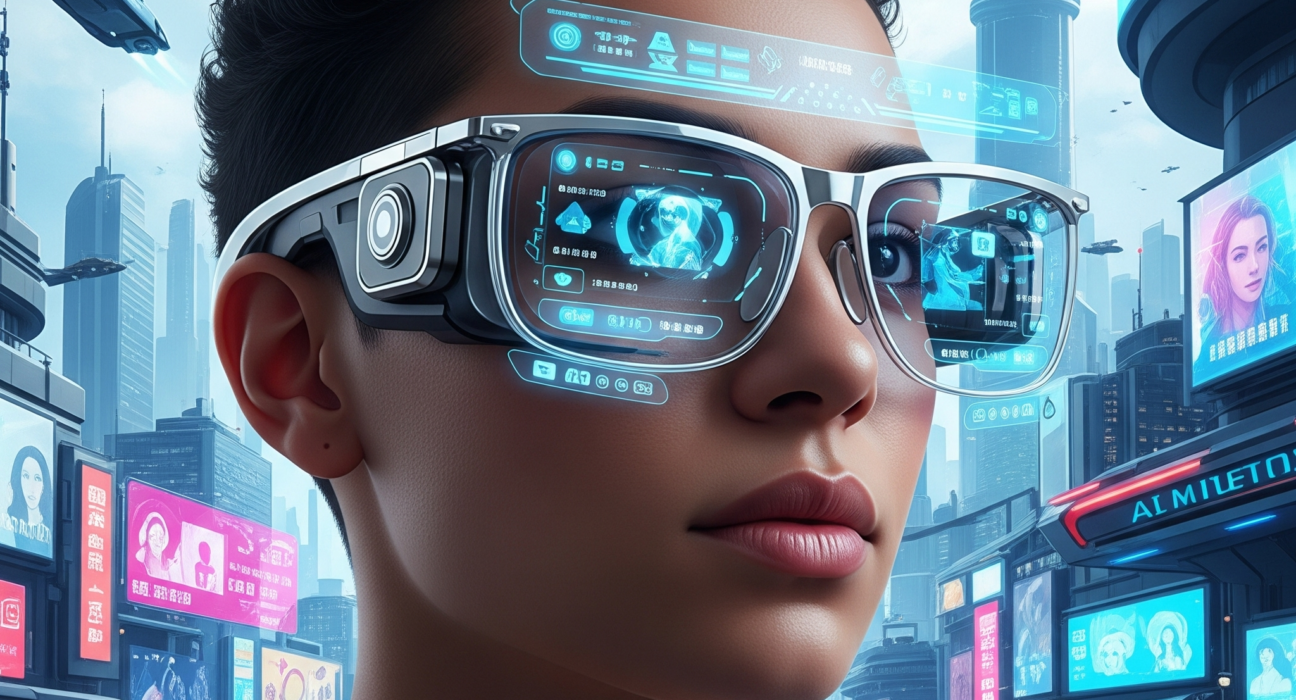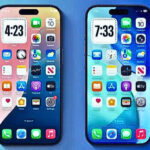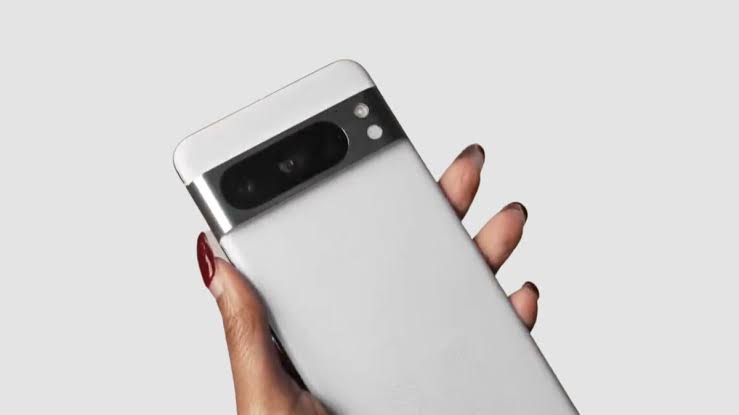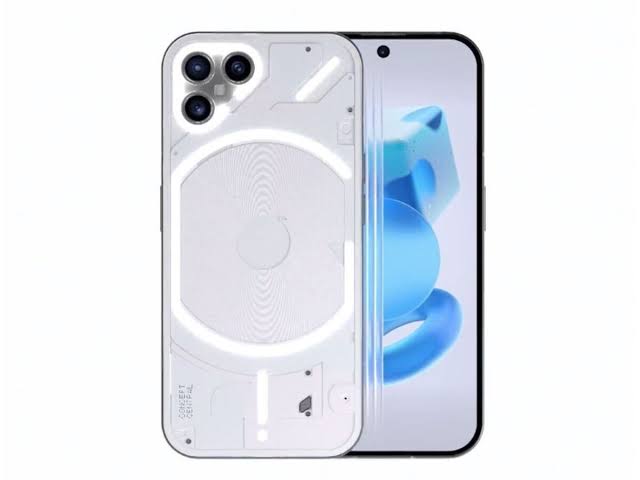Hey there, tech enthusiasts! Imagine slipping on a pair of sleek glasses that don’t just correct your vision but also overlay real-time translations, navigation, or even 360-degree videos right in front of your eyes. Sounds like something out of a sci-fi flick, right? Well, welcome to 2025, where AI-powered smart glasses 2025 are about to redefine how we interact with the world. I got a front-row seat to the hype at Google I/O 2025, and let me tell you, the future of wearable tech is looking bright. Let’s dive into why these glasses are the next big thing and what they mean for you.
What Are AI-Powered Smart Glasses 2025?
You might be thinking, “Haven’t we been here before with Google Glass?” Fair point. But AI-powered smart glasses 2025 are a whole new ballgame. Unlike their clunky predecessors, these glasses blend style, functionality, and cutting-edge AI to create a seamless augmented reality (AR) experience. Picture this: I’m walking through a busy market in Tokyo, and my glasses instantly translate Japanese signs into English, point me to the nearest ramen shop, and even warn me about a low battery on my phone. That’s the kind of magic we’re talking about.
At Google I/O 2025, Google unveiled its Android XR platform, a game-changer for AI-powered smart glasses 2025. They’re partnering with big names like Samsung, Gentle Monster, and Warby Parker to make these glasses stylish enough for everyday wear. With built-in cameras, microphones, and Gemini AI integration, these devices are set to make your smartphone feel like a flip phone from the early 2000s.
Why Are They Trending Now?
The buzz around AI-powered smart glasses 2025 is spiking for a reason. Google Trends shows a surge in searches for AR and AI wearables, with related queries like “smart glasses with AI” and “Android XR glasses” gaining traction over the past week. Why? Because people are craving tech that’s intuitive and blends into their lives. Plus, with Google’s push for AI-driven features like real-time translation and navigation, these glasses are hitting the sweet spot for both tech nerds and casual users. Have you ever wished your glasses could do more than just look good? Well, 2025 might just make that happen.
Key Features of AI-Powered Smart Glasses 2025
So, what makes AI-powered smart glasses 2025 so special? Let’s break it down with the features that have me—and the tech world—geeking out:
- Real-Time Translation: Imagine traveling abroad and reading foreign menus or street signs instantly. Google’s Gemini AI powers live translations displayed right on your lenses. I tried a demo where I “read” a French café menu in English, and it felt like having a personal translator in my pocket.
- Augmented Navigation: Forget pulling out your phone for Google Maps. These glasses project turn-by-turn directions in your field of view. I could see myself using this while biking through a new city—hands-free and hassle-free.
- Immersive Media: Watch 360-degree videos or AR content that feels like you’re in the scene. Perfect for gamers or anyone who loves a cinematic experience.
- Voice and Gesture Controls: Powered by Google’s Project Astra, these glasses respond to voice commands and subtle gestures, making interactions feel natural. I waved my hand to skip a song during a demo, and it was smoother than my phone’s touch screen.
- Stylish Designs: Unlike the nerdy Google Glass of yesteryear, brands like Warby Parker are ensuring AI-powered smart glasses 2025 look like something you’d actually want to wear. Think chic frames with hidden tech.
These features aren’t just cool—they’re practical. Whether you’re a digital nomad, a gamer, or just someone who hates fumbling with their phone, these glasses are designed to make life easier. What feature are you most excited about? Drop it in the comments!
How AI-Powered Smart Glasses 2025 Are Changing the Game
The rise of AI-powered smart glasses 2025 isn’t just about fancy gadgets—it’s about redefining how we use technology. Here’s how they’re shaking things up:
1. Seamless Integration with Daily Life
Remember when smartwatches felt like a big deal? Now, they’re just part of the routine. AI-powered smart glasses 2025 are poised to follow suit. They’re not just for tech bros or early adopters; they’re for anyone who wants tech that works with them. For example, I could see these glasses being a game-changer for teachers, who could pull up lesson notes hands-free, or for doctors accessing patient data during exams.
2. Boosting Productivity
With Gemini 2.5’s Deep Think mode, these glasses can handle complex tasks like analyzing data or solving math problems on the fly. Imagine being a student and getting step-by-step guidance on a calculus problem projected right in front of you. I wish I’d had that during my college days—those late-night study sessions would’ve been way less painful!
3. Enhancing Accessibility
One of the most exciting aspects of AI-powered smart glasses 2025 is their potential to help people with disabilities. Real-time captions for the hearing-impaired or navigation aids for the visually impaired could make these glasses a lifeline. It’s tech that doesn’t just innovate—it makes a difference.
4. A New Era for AR
Augmented reality has been “the next big thing” for years, but AI-powered smart glasses 2025 might finally make it mainstream. By combining AI with AR, these glasses create experiences that feel personal and context-aware. For instance, pointing your glasses at a historical monument could bring up a virtual tour guide, complete with facts and visuals. How cool would that be on your next vacation?
Challenges and Concerns
Of course, no tech is perfect, and AI-powered smart glasses 2025 come with their share of hurdles. Privacy is a big one—those built-in cameras and microphones raise questions about data collection. Google’s been upfront about its SynthID Detector to watermark AI-generated content, but will users trust it? I’m cautiously optimistic, but I’d want clear assurances about how my data’s being used.
Another concern is the price. Google’s hinted at a premium $250/month AI Ultra subscription for some features, which feels steep. Will AI-powered smart glasses 2025 be affordable enough for the average Joe? I’m hoping brands like Warby Parker keep costs down with stylish yet budget-friendly options.
Lastly, there’s the learning curve. Even with intuitive controls, some folks might find the transition to AR glasses overwhelming. I remember struggling with my first smartwatch—figuring out gestures for these glasses might take some getting used to. Have you ever tried a new gadget and felt like you needed a manual? Share your stories below!
Why You Should Care About AI-Powered Smart Glasses 2025
So, why should you, the reader, get excited about AI-powered smart glasses 2025? Because they’re not just a gadget—they’re a glimpse into the future. Whether you’re a tech geek, a professional looking to boost productivity, or just someone who loves cool new toys, these glasses have something for you. They’re like having a mini-supercomputer on your face, and who wouldn’t want that?
Plus, with Google’s partnerships and the Android XR platform, we’re likely to see a flood of apps and use cases in the coming months. Developers are already building for this platform, so expect everything from fitness trackers to AR games to pop up. What kind of apps would you want on your smart glasses? Let’s brainstorm in the comments!
The Competition: Who Else Is in the Race?
Google’s not the only player in the AI-powered smart glasses 2025 game. Apple’s rumored to be working on its own AR glasses, potentially launching in 2026. Meta’s Ray-Ban Smart Glasses are already out there, offering audio and camera features but lacking the full AR experience of Google’s offering. Then there’s Xreal, which is collaborating with Google on Project Aura, a prototype that’s generating serious buzz.
What sets Google’s AI-powered smart glasses 2025 apart is the deep integration with Gemini AI and Android’s ecosystem. It’s like comparing a basic calculator to a graphing one—Google’s glasses are built for power users. Still, competition drives innovation, so I’m excited to see how this space evolves. Which company do you think will nail smart glasses first? Google, Apple, or someone else?
Tips for Getting Ready for AI-Powered Smart Glasses 2025
Want to be an early adopter of AI-powered smart glasses 2025? Here’s how to prep:
- Stay Informed: Follow tech blogs like TheMobileCentral.com for updates on release dates and features. We’ll keep you posted on the latest from Google and beyond.
- Budget Wisely: If the $250/month subscription rumors are true, start saving now. Or look for more affordable models from brands like Warby Parker.
- Learn the Tech: Get comfortable with AR and AI concepts. Try out Google Lens or similar apps to get a feel for what’s coming.
- Join the Conversation: Engage with communities on X or Reddit to share ideas and learn from other early adopters. The more you know, the better you’ll use these glasses.
The Future Is Bright (and Augmented)
As we head into 2025, AI-powered smart glasses 2025 are shaping up to be the tech story of the year. They’re not just a gadget—they’re a new way to see the world, blending AI, AR, and style in a way we’ve never seen before. I’m already imagining how these glasses could change my daily commute, my travels, or even just my Netflix binges.
But the real question is: Are you ready to embrace this tech? Will AI-powered smart glasses 2025 become as common as smartphones, or are they a niche toy for techies? I’m betting on the former, but I want to hear your take. Drop a comment below with your thoughts, predictions, or even your dream features for these glasses. Let’s get the conversation going!
And if you loved this deep dive into AI-powered smart glasses 2025, stick around on TheMobileCentral.com for more on mobile trends, tech innovations, and AI developments. We’ve got plenty more where this came from!






